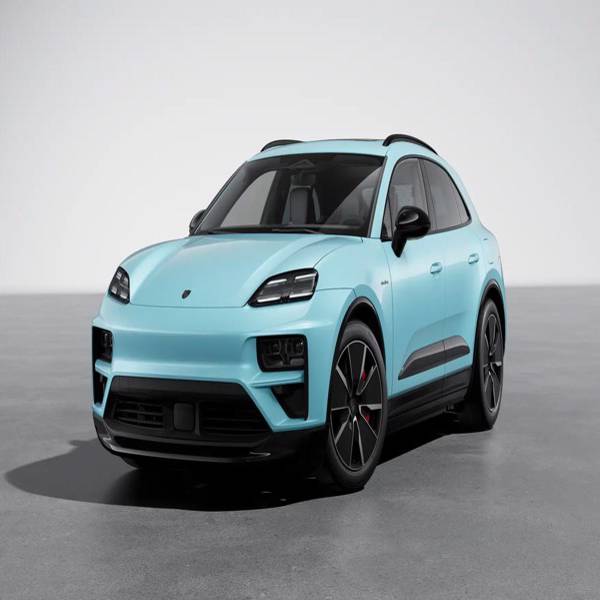Porsche Macan EV: Electrifying Performance, Sharper Handling
Porsche’s Macan has always been known for affordability, sales success, and top-notch handling. But with this new, fully electric model replacing the gasoline version, it has much to live up to. This electric Macan is the first of many Porsches to go electric, including the popular 718 sports cars. However, electric vehicles tend to be pricier.
- Outdated Platform: Unlike the old gasoline Macan built on a shared platform, the new electric Macan is built from the ground up for electric power. This new platform, called PPE, is also used by the Audi Q6 e-tron.
- Battery and Charging: The Macan EV uses a large 100kWh battery (with 95kWh usable) and an advanced 800-volt electrical system. This allows for fast charging, but more details on performance will be covered later.
- Fast Charging: The Macan EV can be supercharged at speeds of up to 270kW, but these chargers are still uncommon in India. Even with a more typical 400V charger, the Macan cleverly splits its battery for efficient charging at up to 135kW.
- Slower Charging: While the Audi Q6 e-tron offers faster AC charging at 22kW, the Macan is limited to 11kW. This is suitable for overnight charging at home, but slower for public AC stations.
- Impressive Range: Despite the slower AC charging, the Macan EV boasts a long range thanks to its large battery. The range reaches up to 591km for the Turbo model and goes even further (613km) for the Macan 4 variant, based on the WLTP standard.
- Subtle Size Increase: Despite the major shift to electric power, the Macan EV’s dimensions haven’t changed dramatically. It’s slightly longer (58mm), and wider (9mm), but maintains the same height.
- Spacious Feel: The wheelbase, however, sees a significant stretch of 86mm. This, combined with a sleeker design and larger wheels (up to 22 inches), creates the impression of a bigger car.
- Adaptable Suspension: The air suspension allows for adjustable ground clearance, ranging from 185mm for everyday driving to a substantial 224mm in off-road mode.
- Weight Gain: A key difference is the weight. The Macan EV is a hefty 400kg heavier than the gasoline model, tipping the scales at 2,405kg.
- Modern Evolution: The Macan EV’s design is a fresh take on the familiar Macan shape. It retains the essence of the original but incorporates modern Porsche elements, particularly those seen in the Taycan electric sports car.
- Striking Signature: The most noticeable change is the slim, four-stripe LED daytime running light (DRL) design. This is possible because the headlights are now positioned lower in the bumper. These DRL pods sit on raised front fenders, reminiscent of the iconic 911, and help define the front end.
- Preserved Details: Two classic Macan design elements return on the sides: the stylishly curved roofline and the black “side blade” at the door base, which can be customized with different materials.
- Refined Rear: The rear features a more sculpted, three-dimensional take on the signature LED taillights and light bar, which now integrates the Porsche lettering.
- Functional Touches: The sloping roof design eliminates the need for a rear wiper. However, a 911-inspired active spoiler automatically deploys at higher speeds for added stability.
- Balancing Tradition and Tech: Porsche takes a surprisingly conservative approach with the Macan EV’s interior. Unlike some EVs that go all-digital, the Macan retains a familiar layout similar to gasoline models. The biggest giveaway of the electric nature is the storage area under the center console, where a gear shifter would typically be.
- Triple Threat Screens: The dashboard features a trio of screens: a 12.6-inch digital instrument cluster and two 10.9-inch touchscreens, one for the center console and another optional one for the front passenger. Thankfully, Porsche avoids the trend of fully digital climate controls, keeping physical buttons for essential functions.
- Luxury Comfort: As expected from Porsche, the interior materials are top-notch, with extensive use of high-quality materials (likely optional extras). The test cars boasted a panoramic sunroof and the brand’s excellent 18-way adjustable front seats with heating, ventilation, and a massage function (a first for the Macan).
- Innovative Heads-Up Display: The new heads-up display projects information like lane warnings and navigation directly onto the windshield, creating a virtual 85-inch screen. This augmented reality system is impressive and surpasses similar features in other cars.
- Compromised Rear Seats: The Macan EV’s sloping roofline and electric platform create a less-than-ideal experience for rear passengers. While legroom is adequate, the low seating position forces passengers to sit with their knees up, making them feel cramped. This is particularly noticeable for taller individuals sitting one behind the other.
- Storage Breakdown: The Macan EV offers two cargo compartments. Up front, there’s a handy 85-liter “frunk.” However, the main boot space suffers in the Turbo model, offering only 480 liters. Lesser models will have a more usable 540 liters.
Turbocharged Power:
- The top-of-the-line Turbo model boasts impressive acceleration thanks to a larger rear motor positioned over the rear axle, creating a near rear-wheel-drive layout (think Porsche 911!). This contributes to a sportier weight distribution of 48% front / 52% rear (compared to 50/50 in other models).
- With launch control (“Overboost” in Porsche speak), the Turbo rockets from 0-100 km/h in a claimed 3.3 seconds, which might even feel understated. It delivers a peak output of 639 horsepower for short bursts, settling down to a still-impressive 584 hp during regular driving.
- However, the Sport Plus mode can be a bit overwhelming for everyday roads with its hair-trigger throttle response. You might opt for Sport or even Normal mode for a more manageable and enjoyable driving experience, especially with family on board. The artificial sports car sound also gets toned down in these modes.
- While impressive, the Macan EV’s acceleration might not be the segment leader as some competitors have begun to close the gap.
Regenerative Braking and Macan 4:
- Unlike the Taycan, the Macan EV lacks steering wheel paddles to adjust regenerative braking on the fly. You can only switch it on or off via the touchscreen or a programmable shortcut button. The braking itself is mild and doesn’t allow for true one-pedal driving.
- The lower-spec Macan 4 (not available in India) offers a different experience. While it shares the same front motor as the Turbo, its rear motor is smaller and less powerful. It’s also slightly lighter, but the difference in weight isn’t noticeable due to the overall heaviness of these vehicles.
- The Macan 4’s power delivery feels smoother and less overwhelming in all driving modes than the Turbo. This might make it more enjoyable for everyday driving while offering enough power for those who want it.
Handling Champ:
The twisty mountain roads near Nice provided the perfect test ground for the Macan EV’s handling. The car truly shines in these conditions, living up to Porsche’s reputation for dynamic performance.
- Sharp Steering: The steering feels precise and responsive, with the rear-wheel steering system further enhancing agility. This system tightens the turning radius for easier maneuvering, especially at low speeds.
- Rearward Bias: The Macan EV prioritizes rear-wheel drive, with the front wheels kicking in only when necessary to prevent oversteer during sharp acceleration. This rearward weight distribution combined with exceptional grip gives the car a very planted and confident feel on the road. However, reaching these handling limits is not recommended for public roads.
Also read: 2024 Indian Auto Roundup: Buckle Up for New Maruti Suzuki Swift, Electric Tata Curvv, and More
Trade-Off for Performance:
- Weight Impact: While the Macan EV retains its playful handling, it’s not quite as playful as the gasoline model. This is partly due to the electric car’s instant power delivery and, more significantly, its heavier weight.
- Firm Ride: The ride quality leans towards a firmer side, even with the air suspension. This is a typical Porsche characteristic that prioritizes handling over a plush ride. While the air suspension adapts to road conditions, it doesn’t offer the same level of comfort as some competing luxury SUVs.
The Macan EV prioritizes sharp handling over a luxuriously soft ride. This aligns with Porsche’s brand identity and will likely appeal to driving enthusiasts who value performance.
The new Macan EV sheds its “entry-level Porsche” label, transforming it into a luxurious, tech-laden electric statement piece. While its thrilling performance (especially in Turbo trim) carries the Porsche torch, it comes at a premium price (Rs 1.65 crore). Don’t worry, more affordable models are coming! Plus, the gasoline Macan isn’t going anywhere. This electric Macan targets a new generation of Porsche enthusiasts, and its SUV practicality might make it the brand’s best-selling EV. One thing’s certain: Porsche knows how to make electricity exciting.



